
(Note from the author: This is an automated translation of the original German article)
Attentive readers might sense a hint of confusion when reading the
headline. Killarney again? That’s right, only recently I visited
the Killarney Distilling Company site on the Ring of Kerry.
However, today I’m dedicating myself to the Killarney Distillery
and its whiskey. Despite the similarities in naming, the two
distilleries are significantly different. Accordingly, at the
beginning of my time in Kerry I was vaguely aware that there were
two different distilleries in the Killarney area. One of them,
namely the Killarney Distillery, was a bit more present to me.
Because it is located in Scart, directly on the main road that
connects my home Tralee with Killarney. Accordingly, I drove past
it regularly.
In November 2022 I got in touch with John Keane. He is the owner
and man of everything at his Killarney Distillery. Despite the
particularly busy time of year in autumn, he graciously invited
me to visit. So I made the 20 minute journey to Scart at the end
of November. In Kerry, it had rained almost continuously since
early October. This late afternoon was no different. So the
raindrops drummed on my jacket as I left the car and crossed the
car park. There was an open van in front of the building and a
workman was gathering his materials inside. He nodded to me
before I entered the hall through the slightly opened side door.
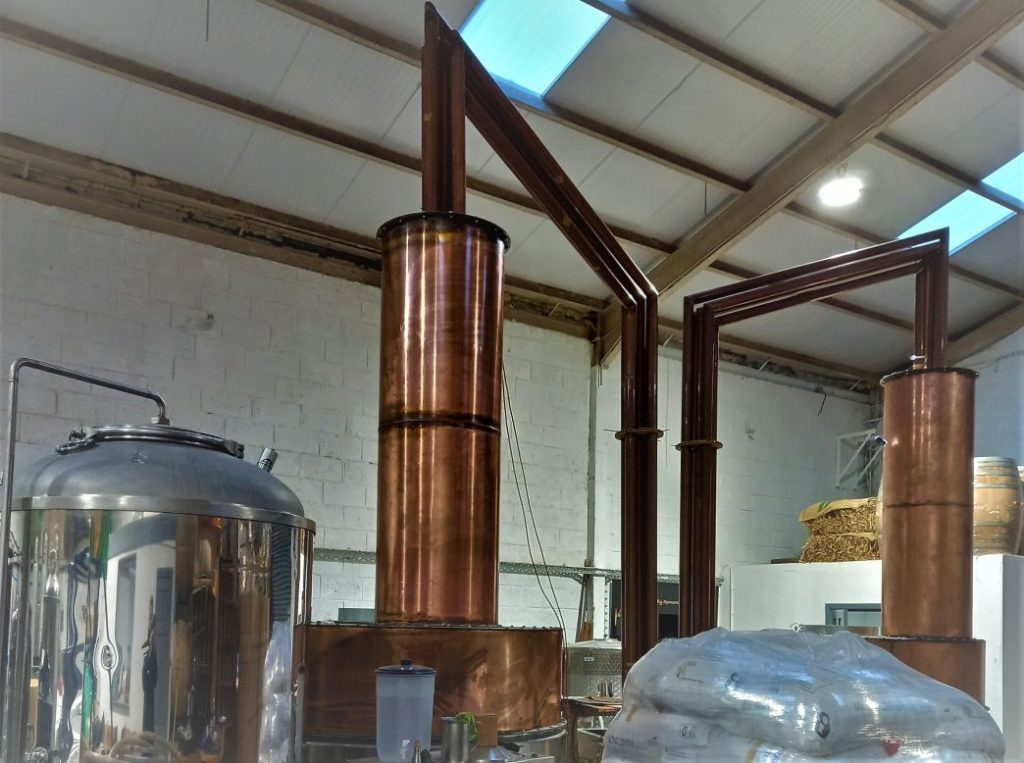
John Keane and Killarney Distillery
The Killarney Distillery Whiskey is produced in a warehouse that
is part of a small industrial estate. Its neighbors on the
property include two auto repair shops. From the outside, the
distillery is recognizable by the white building wall that faces
the street. Painted there in large black letters is the name Torc.
Torc is the brewery that John Keane started in 2014.
Today, the brewery and distillery share the same location.
I now walk through the hall, past a pallet store. Behind it are
two conspicuous pot stills of the brand self-made. My gaze wanders
to the end of the hall, from where voices can be heard. A man
there catches sight of me, says something to the side and then
walks towards me. It is John who greets me now. After a short
conversation about the current weather situation in Kerry we
approach a wooden barrel that serves as a table and shelf. A lot
of stuff is lying around randomly on it. You can clearly feel that
this is an ongoing production operation on the one hand, and on
the other hand that a lot of things are still in the development
stage.
Torc Brewing and Killarney Distillery Whiskey
„We moved to here in 2018. Before that, we were based at the other
end of Killarney with our brewery,“ John looks back on his career.
„The brewery itself started in 2014, when I was a hobby brewer
working as a technical advisor. However, my employer closed the
business and I went into unemployment.“ John solved this
personally difficult situation head-on: „My beer was good, people
liked it. So I went into business for myself and opened Torc
Brewing as a craft beer brewery.“
In fact, his beer continued to do well after the professional
launch and the Torc brand made a name for itself in his hometown.
„It’s difficult to get into pubs with craft beer. The big top dogs
are blocking the taps with all their might,“ John reports. „At the
time, though, the craft beer craze was just sweeping through
Ireland. That helped a lot because bars wanted to offer local
beers to their patrons,“ he knows. Eventually, John Keane planned
the first expansion. However, he lacked the money to do so. „I was
in a classic trap. I could get bigger orders, but needed the cash
to pre-fund the materials. No cash, no order. No order, no cash,“
John said.
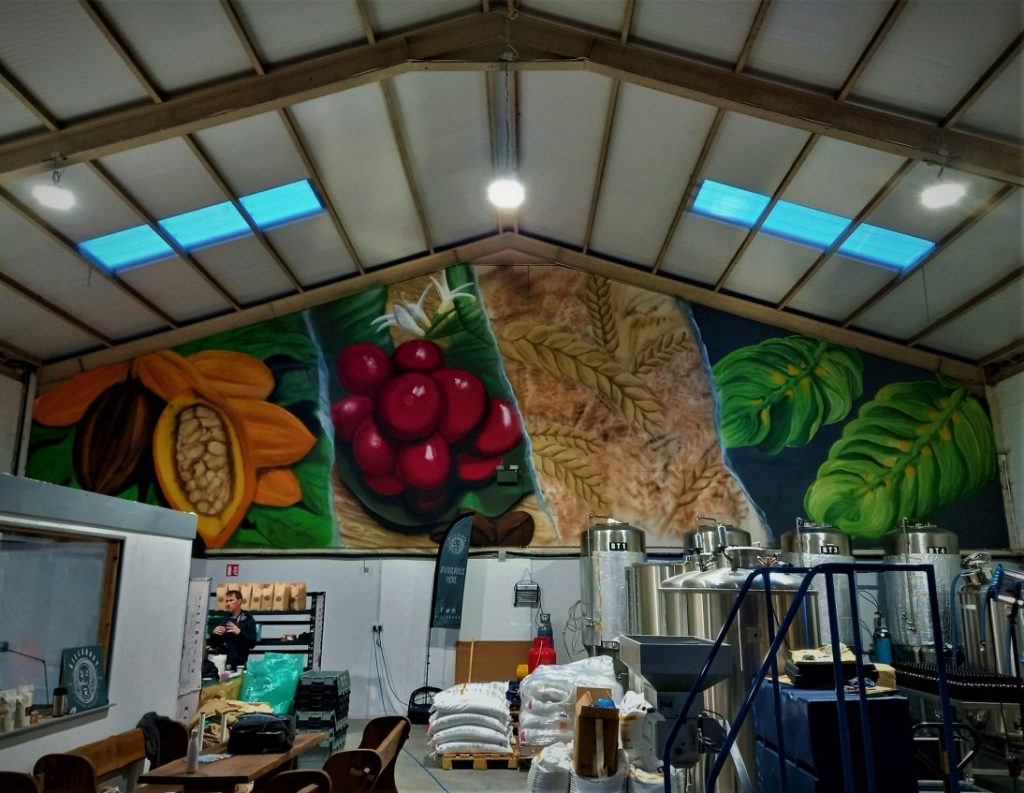
Killarney Distillery: More than whiskey
At that time he met Aidan Forde, his future business partner,
for the first time. About that, John says, „Aidan and I got
along great from the start. We were on the same wavelength.“
Aidan Forde invested in Torc Brewing. The new funds went into
production and the company eventually moved into the larger
premises in Scart. John didn’t just stick to beer though: „We’ve
also been roasting our own coffee here since 2019: Killarney
Coffee.“ At the same time, Killarney Chocolate, a chocolate
manufactory, came into being. „However, we discontinued the
chocolate business quite quickly. Unfortunately, we couldn’t
produce economically enough to be price competitive.“
Beer, coffee, chocolate. Behind the diversity is John’s attitude
to tackle and try out new things. Getting into the distillation
of spirits seems the most obvious conclusion for a brewer. John
himself saw it that way, too. In December 2020, he distilled his
first whiskey, New Make. „In December 2023, our first whiskey
will officially be three years old,“ John says, looking forward
to the future.
Quite unusual was the way to the first distillation. John and I go
over to the two-part distillation apparatus. The most striking
thing about this is the unusual Swan Necks, as they each consist
of five individual tubes. „I can adjust the selection of the tubes
individually. In this way, I control the reflux as desired. What’s
more, the condensers are on the inside,“ John explains.
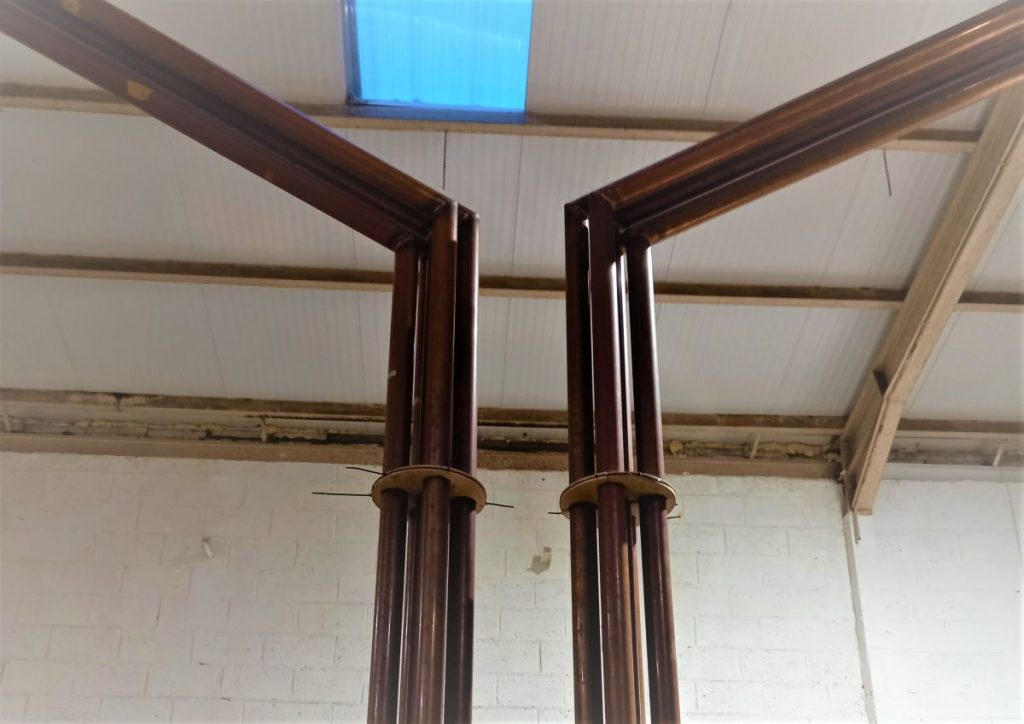
The Killarney Distillery Whiskey
John’s pot still for the Killarney Distillery Whiskey is selfdesigned and individually built for him. He procured the
materials himself. The lower half of the still is made from old
milk containers that he bought from a farmer. An acquaintance
hammered and welded the entire copper part according to John’s
specifications: „I asked around a bit.
Finally, an acquaintance told me he would do the job for a few
coffees. In fact, a short time later everything was ready and
…ready for action.“ Quite unusual and remarkable at the same
time. Most importantly, John saved a ton of money. He elaborates,
„Most distilleries source their apparatus from Forsyths in
Scotland. That’s expensive, and besides, it means they all have
the same kind of pot still. However, I wanted something that would
produce us an individual raw spirit.“ The pot stills hold 2,000
litres each. The plan is to produce fourteen barrels of raw spirit
per week when John later distills in 24/7 mode. „If that works
out, I’ll be happy,“ John smiles.
What John is distilling is a pot still whiskey, both legally
compliant and non-compliant. „The very first whiskey will be a
legal pot still whiskey made from malted and unmalted barley,
containing up to 5% oats,“ John knows. „But I don’t like being
restricted like that. That’s why other pot still mashbills are
outside the specifications of the Technical File.“ Killarney
Distillery Whiskey is both double and triple distilled. Here,
John Keane describes his New Make as a light, delicate spirit.
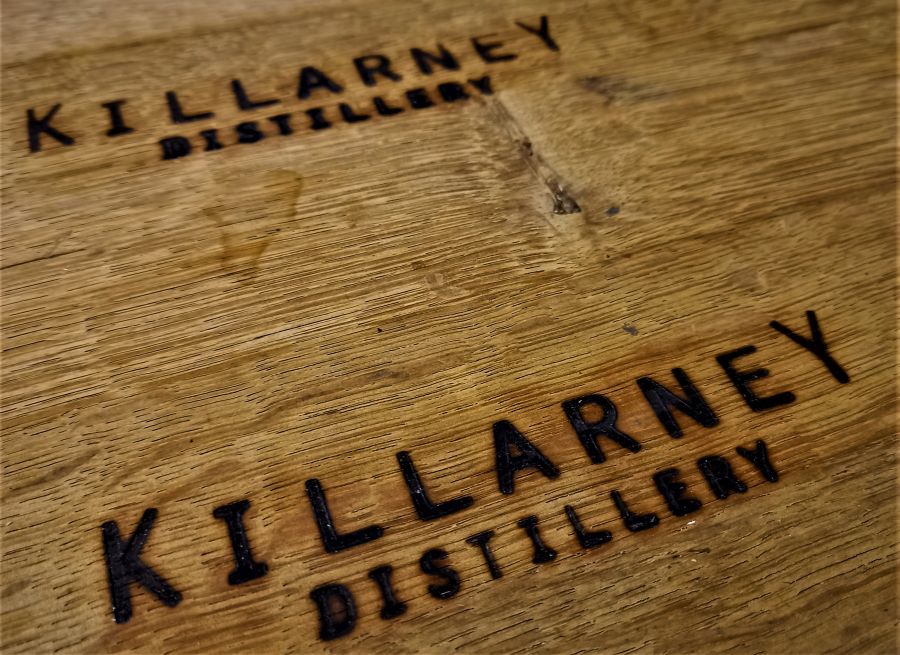
Irish Whiskey through the eyes of a brewer
„I look at distillation through the eyes of a brewer. That’s why I
almost exclusively use brewer’s yeast, such as wheat beer yeast.
Not necessarily the same as for our beers. But always the variety
that I think is best suited for the distillate,“ he describes his
choice of material. This procedure leads to a long fermentation
time. Says John, „We ferment the mash for 14 days at 18 to 20
degrees.“ He laughs at my astonished look at the long fermentation
time. „That’s normal for brewers. Brewer’s yeast is fundamentally
different than the common varieties for distillers.“ To that end,
John ferments „on the grain,“ leaving the grain in the washbacks
during the process. „This allows more flavors to go into the
wash,“ he says.
John sources all the grain for distillation from local farmers.
„The furthest field is 20 kilometers from here,“ he knows. Here,
the eight farmers work on John’s behalf. „I bring them the seeds I
want grown. Mainly these are historical grain varieties that are
no longer commonly available. I keep a close eye on how the
varieties develop on the different sites,“ John explains. „It’s
interesting to see how the plants in neighboring fields develop,
sometimes completely differently,“ he smiles.
Malting, Peating and Virgin Killarney Oak
The further steps before distillation all take place on site. John
has his own malting floor, where he malt his grain. In the
process, he uses peat fire for kilning. „The peat comes from local
fields. I make sure to kiln the grain with peat, which in turn
ideally comes from the immediate vicinity of the respective barley
field,“ he reports.
A clear focus on yeast and a strong attention to provenance and
type of grain and peat – it’s no surprise that John also pays
attention to the detail of his cask management.
„We don’t touch bourbon barrels,“ he opens clearly. Therefore, the
Killarney Distillery Whiskey is stored almost exclusively in
Sauternes wine barrels. John sources these from a variety of
sources in France. „Among them are renowned wineries, which I am
not allowed to mention by name. Until I’ve released a whiskey,
they’re afraid the connection might damage the reputation.“ John
laughs. In addition to Sauternes casks, John has several Virgin
Killarney Oak casks. He had these made from locally felled and
fallen trees after storm damage.
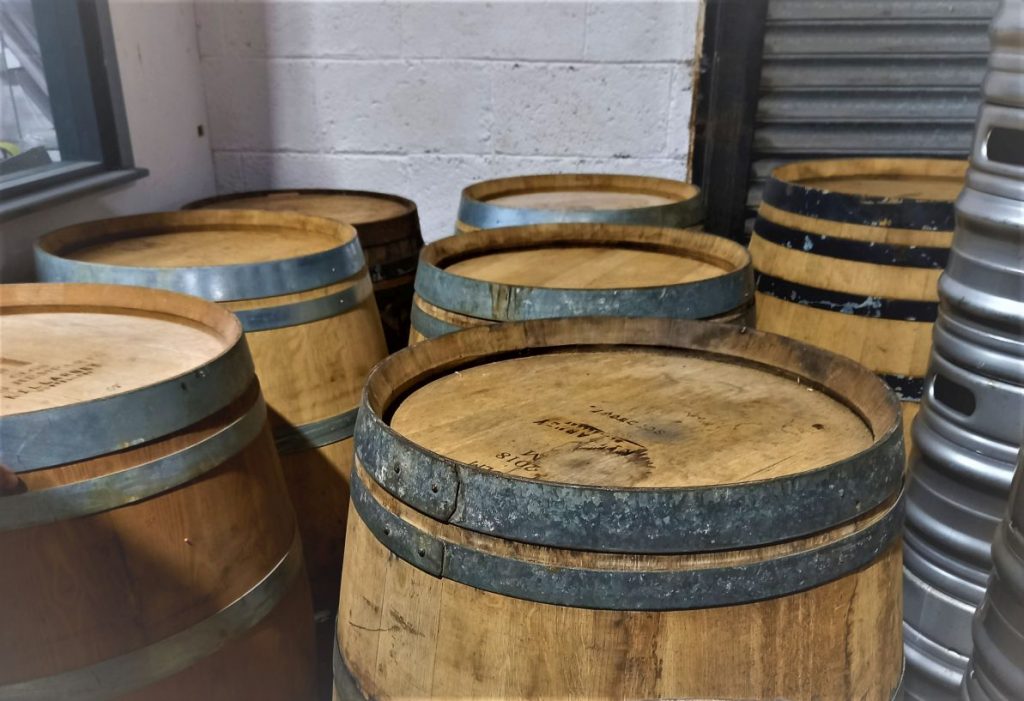
„Some of these casks are 700 litres. That is the legal maximum
that a barrel for Irish whiskey can have. Irish oak is different
from European or American oak because of the climate here. And
rare,“ John explains. For John, the selection of the barrels is
another key to a
individual whiskey. Using Sauternes and local oak as the hallmarks
of Killarney Distillery Whiskey. „Certainly I’ll be doing beer
barrel finishes as well. That’s an obvious one. I might even send
oak barrels to France to store Sauternes in. There are plenty of
possibilities,“ John looks ahead.
While his whiskey is stored in barrels waiting to mature, John
plans for the near future. In the process, further expansion is on
the horizon. In order to be prepared for the production
expansions, the distillery and brewery need more space. That’s why
John is moving into the additional hall unit next door in 2023. He
is also working on automating production. Two projects are already
in development. He takes out his mobile phone and opens an app.
Expansion plans and professionalization
„In collaboration with IT Tralee, I developed this app. It always
shows me the current data of the distillation in progress. For
example, I can react if something is not going according to plan.
Also, the plant shuts down automatically should things go wrong.“
At the same time, John wants to make this technical data
available to his customers. To do this, he has in mind streaming
the data live on the website. „That way, anyone can see what
we’re distilling at any time and, more importantly, how we’re
doing it.“ John also plans to automate the malting process. This
will involve a robotic arm taking the work out of turning the
grain for him. On this he explains, „Turning is a horrible job
because you have to get into the stinky malt floor. I like to
technically wriggle out of such problems.“
Natural warehouse and Ireland’s first Rye whiskey distillery
John tells me about further plans. He is planning a natural
warehouse in an old quarry on the west coast of Kerry.
Here John Keane speaks of exceptional storage conditions for the
Killarney Distillery Whiskey. „I don’t have to build anything,
just secure access. And inside, it’s year-round
a constant 12 degrees Celsius.“ What he lacks is the final
building permit. He also plans to start up a second distillery.
„The site already exists and we are on schedule to start
distilling next year. It will be a rye whiskey distillery.“ What
he calmly pronounces is in fact big news, because with an all-rye
whiskey distillery, John would be a pioneer in the Irish whiskey
world.
All these plans are directed towards one goal: To produce the
Killarney Distillery Whiskey. There’s an important question here:
why is he also using the town name in the branding? „Of course, it
would be more logical to call the distillery and whiskey Torc,“ he
concedes. Here, John takes a deep breath and then elaborates:
„It’s fundamentally not okay for someone to use a place name for a
product if that product doesn’t come from that place.“ A clear dig
at the Killarney Distilling Company. There, the first bottling
under the Killarney brand name appeared in 2021. „That was an
eight-year-old whiskey that they had to source elsewhere due to
the lack of their own distillery,“ John explains.
Label transparency
John sees a lot wrong in the whole Irish whiskey industry: „It is
very important to me that there is transparency for the consumer.
If someone uses a place name on the label, it suggests to the
buyer that the product comes from that place. Unfortunately, the
majority of the time it doesn’t.“ Unforgivable for John, he
himself pays close attention to the origin of materials for his
products, after all. He goes on to report, „I founded the Irish
Distillers Association, an association for distilleries that want
to be transparent.“ To John’s regret with moderate success: „There
is a lot of positive feedback. But no one dares to do it
publicly,“ he says. Rather, the majority continued as before.
He is particularly concerned about his fellow Killarneyians.
„Discussions with the Killarney Distilling Company resulted in.
a legal dispute that is still ongoing,“ he states. In this, the
two sides were dividing against each other. „They also want to
ban me from using the city name. Again: Of course, it would be
logical to just continue under the name Torc. But of course it is
now also about questions of principle,“ he shows himself
determined.
John and I say goodbye to each other. On the way out, he hands me
a case of beer. Torc Brewing German Smoked Ale. With the clinking
carton under my arm, I step out into the parking lot. It is pitch
dark by now. Of course it’s raining. In the car, I turn on the
windshield wipers. It would be a shame for John Keane and the
Killarney Distillery Whiskey if the legal dispute had a negative
impact on his company. His passion for a good product made from
local raw materials and his individual approach make us curious
about the result.
